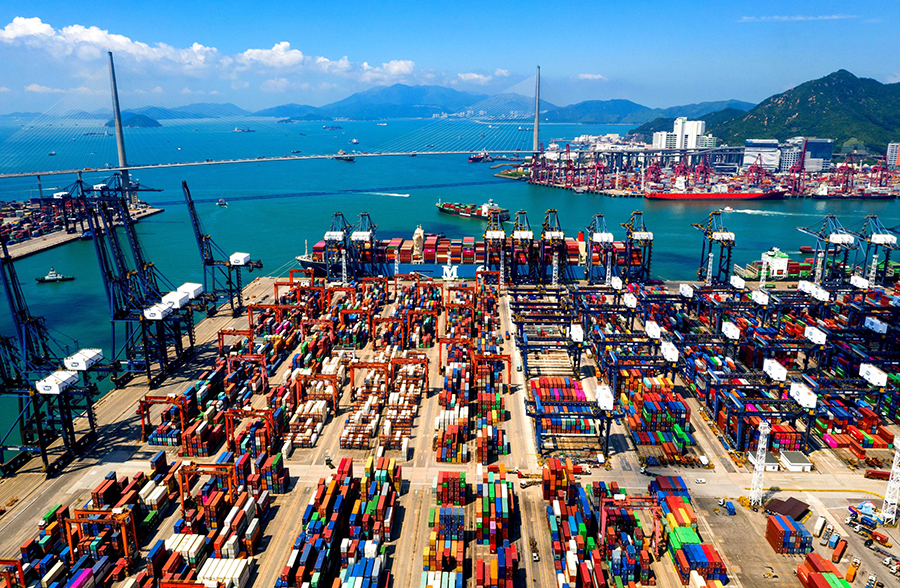
Supply chains all around the world have been disrupted to unparalleled levels, and container freight rates are at their highest. Due to the pandemic outbreak, there has been a surge in containerized consumer goods demand in the United States, causing congestion and reducing effective container logistics capacity.
Freight forwarders in several places have been unable to find capacity due to severe shortages of vessel spaces, warehouse spacing, container boxes intermodal capacity, and labor. Freight forwarders who were able to gain access to the limited capacity, had to experience a quite low reliability both at sea and on land.
All around the world, average container schedule delays have doubled, and in the Far East and North America trade, they have increased sixfold.
The challenges caused by a North American import demand boom
The pandemic has caused significant fluctuations in containerized goods demand, which has caused disruptions in overall containerized logistics supply globally.
Majority of the countries who had imposed restrictions and shutdowns early in the pandemic, reduced overall container trade and demand.
While the demand was slowly recovering globally, in the third quarter of 2020 North America in particular, import volumes have been increased by a 20% average in 2021 compared to 2019. In comparison, import volumes globally have been increased by 3% in 2019 compared to 2018. (reference)
- A sharp reduction in the supply chain caused by congestion affects the containerized freight rates
When China imposed a lockdown at the start of 2020, there was a quite a noticeable drop in the exports. Retailers had to reduce orders due to concerns about a global recession rate.
In order to match logistics supply with demand, ocean carriers were obliged to cancel sailings and idled vessels. This measure had allowed ocean carriers to protect their rates from falling, however it failed to effectively reposition empty containers back to Asia.
Demand for containerized goods had recovered by the third quarter of 2020 after China’s factories reopened. Shippers rushed to secure access to the limited boxes as container box shortages at export locations increased rates. Lockdowns in North America resulted in a strong rebound in consumer demand, which ocean carriers capitalized on by relocating vessels and container equipment to the Transpacific and Transatlantic trade lanes.
Container demand drivers
Container demand can be influenced by end-user expenses on goods, shippers’ desire to keep inventory on hand, and an economic reopening that may shift spending back to services.
The increase in container demand seen in North America is linked to consumer spending on goods. Pandemic lockdowns have increased the share of US personal expenditure on goods from 31% to 35%. The amount spent on goods was increased between September 2019 and September 2021, remaining 14 percent higher than the pre-pandemic end.
The US government provided incentive payments during the fallout of the pandemic to relieve the impact of the economic shutdown, allowing the consumers’ spending power to remain in place while almost all service-industry related activities were severely restricted.
Overall spending has increased, with consumer spending on services in the United States only 2% below the pre-pandemic trend. Full economic reopening may stimulate spending on services, resulting in prepandemic levels of spending and demand for goods.
Containerized logistics capacity drivers
Containerized logistics capacity is defined as the volume that the system can process and transport at any given time. This capacity is dependent on countryside logistics and equipment availability, ocean capacity, equipment availability and labor availability. The current rate increase is being driven primarily by a lack of effective capacity, which is being caused by supply chain congestion.
Challenges of Containerization
- Site constrains – The fact that containers take up a lot of terminal area (primarily for storage) suggests that many intermodal terminals have been moved to the outskirts of cities.
- Capital inventiveness – Infrastructures and machinery for handling containers, such as huge cranes, warehouses, inland roads, and rail access, are significant capital projects that call for sizable capital resources.
- Stacking – The complexity of the container layout on the ground and in the modes
- Repositioning – Many containers are carried empty due to trade imbalances (20 percent of all flows). However, a container occupies the same amount of space whether it is filled or empty.
- Theft and losses – A level of cargo vulnerability between a terminal and the destination was represented by high-value products and a load unit that may be forcibly opened or taken away (on a truck).
How will HTL logistics help you overcome these obstacles?
HTL Logistics is a multinational logistics service with expertise in all facets of the supply chain, including ground transportation, project cargo, warehousing, ocean, and air freight forwarding, and customs brokerage.
With our experience in meeting customers exact requirements, we offer the highest standard of services along with individual attention and flexibility.
HTL provides a robust end to end supply chain solution with 40 years of expertise in the industry, providing a hassle-free solution for multi- vendor coordination, escalated costs as well as increased delivery – cycle times. The ground transport team of HTL manages their fleet of owned and leased vehicles, with over 200 container trailers and 600 delivery trucks combined move over 40,000 tons of cargo yearly!



